Huntingtin CAG expansion impairs germ layer patterning in synthetic human 2D gastruloids through polarity defects
- PMID: 34608934
- PMCID: PMC8513611
- DOI: 10.1242/dev.199513
Huntingtin CAG expansion impairs germ layer patterning in synthetic human 2D gastruloids through polarity defects
Abstract
Huntington's disease (HD) is a fatal neurodegenerative disorder caused by an expansion of the CAG repeats in the huntingtin gene (HTT). Although HD has been shown to have a developmental component, how early during human embryogenesis the HTT-CAG expansion can cause embryonic defects remains unknown. Here, we demonstrate a specific and highly reproducible CAG length-dependent phenotypic signature in a synthetic model for human gastrulation derived from human embryonic stem cells (hESCs). Specifically, we observed a reduction in the extension of the ectodermal compartment that is associated with enhanced activin signaling. Surprisingly, rather than a cell-autonomous effect, tracking the dynamics of TGFβ signaling demonstrated that HTT-CAG expansion perturbs the spatial restriction of activin response. This is due to defects in the apicobasal polarization in the context of the polarized epithelium of the 2D gastruloid, leading to ectopic subcellular localization of TGFβ receptors. This work refines the earliest developmental window for the prodromal phase of HD to the first 2 weeks of human development, as modeled by our 2D gastruloids.
Keywords: 2D gastruloids; Epithelial polarity; Human embryonic stem cells; Huntington's disease; TGFβ signaling.
© 2021. Published by The Company of Biologists Ltd.
Conflict of interest statement
Competing interests A.H.B. is the co-founder of RUMI Scientific. A.H.B. and F.E. are shareholders of RUMI Scientific.
Figures
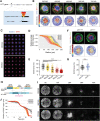
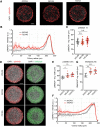
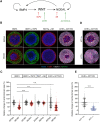
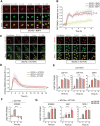
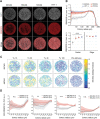
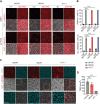
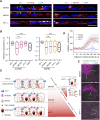
Similar articles
-
A Balance between Secreted Inhibitors and Edge Sensing Controls Gastruloid Self-Organization.Dev Cell. 2016 Nov 7;39(3):302-315. doi: 10.1016/j.devcel.2016.09.016. Epub 2016 Oct 13. Dev Cell. 2016. PMID: 27746044 Free PMC article.
-
Chromosomal instability during neurogenesis in Huntington's disease.Development. 2018 Jan 29;145(2):dev156844. doi: 10.1242/dev.156844. Development. 2018. PMID: 29378824
-
Functions of huntingtin in germ layer specification and organogenesis.PLoS One. 2013 Aug 13;8(8):e72698. doi: 10.1371/journal.pone.0072698. eCollection 2013. PLoS One. 2013. PMID: 23967334 Free PMC article.
-
Cancer: From Wild-Type to Mutant Huntingtin.J Huntingtons Dis. 2018;7(3):201-208. doi: 10.3233/JHD-180290. J Huntingtons Dis. 2018. PMID: 29889077 Free PMC article. Review.
-
RNA toxicity induced by expanded CAG repeats in Huntington's disease.Brain Pathol. 2016 Nov;26(6):779-786. doi: 10.1111/bpa.12427. Brain Pathol. 2016. PMID: 27529325 Free PMC article. Review.
Cited by
-
Quantitative determination of the spatial distribution of components in single cells with CellDetail.Nat Commun. 2024 Nov 26;15(1):10250. doi: 10.1038/s41467-024-54638-8. Nat Commun. 2024. PMID: 39592623 Free PMC article.
-
Huntingtin CAG-expansion mutation results in a dominant negative effect.Front Cell Dev Biol. 2023 Sep 1;11:1252521. doi: 10.3389/fcell.2023.1252521. eCollection 2023. Front Cell Dev Biol. 2023. PMID: 37727506 Free PMC article.
-
Exploring potential developmental origins of common neurodegenerative disorders.Biochem Soc Trans. 2024 Jun 26;52(3):1035-1044. doi: 10.1042/BST20230422. Biochem Soc Trans. 2024. PMID: 38661189 Free PMC article. Review.
-
Distinct molecular patterns in R6/2 HD mouse brain: Insights from spatiotemporal transcriptomics.Neuron. 2025 Aug 6;113(15):2416-2437.e6. doi: 10.1016/j.neuron.2025.05.014. Epub 2025 Jun 6. Neuron. 2025. PMID: 40482637
-
Quantitative developmental biology in vitro using micropatterning.Development. 2021 Aug 1;148(15):dev186387. doi: 10.1242/dev.186387. Epub 2021 Aug 3. Development. 2021. PMID: 34345912 Free PMC article. Review.
References
-
- Arteaga-Bracho, E. E., Gulinello, M., Winchester, M. L., Pichamoorthy, N., Petronglo, J. R., Zambrano, A. D., Inocencio, J., DE Jesus, C. D., Louie, J. O., Gokhan, S.et al. (2016). Postnatal and adult consequences of loss of huntingtin during development: Implications for Huntington's disease. Neurobiol. Dis. 96, 144-155. 10.1016/j.nbd.2016.09.006 - DOI - PMC - PubMed
-
- Ciarochi, J. A., Calhoun, V. D., Lourens, S., Long, J. D., Johnson, H. J., Bockholt, H. J., Liu, J., Plis, S. M., Paulsen, J. S., Turner, J. A., et al. (2016). Patterns of co-occurring gray matter concentration loss across the Huntington disease prodrome. Front. Neurol. 7, 147. 10.3389/fneur.2016.00147 - DOI - PMC - PubMed
-
- Conforti, P., Besusso, D., Bocchi, V. D., Faedo, A., Cesana, E., Rossetti, G., Ranzani, V., Svendsen, C. N., Thompson, L. M., Toselli, M.et al. (2018). Faulty neuronal determination and cell polarization are reverted by modulating HD early phenotypes. Proc. Natl. Acad. Sci. USA 115, E762-E771. 10.1073/pnas.1715865115 - DOI - PMC - PubMed
Publication types
MeSH terms
Substances
LinkOut - more resources
Full Text Sources

